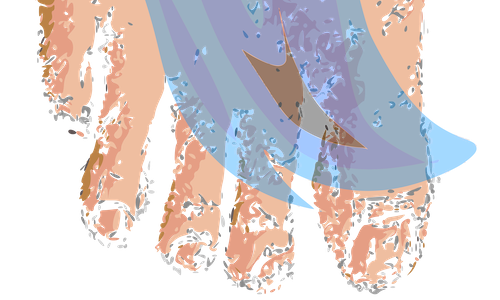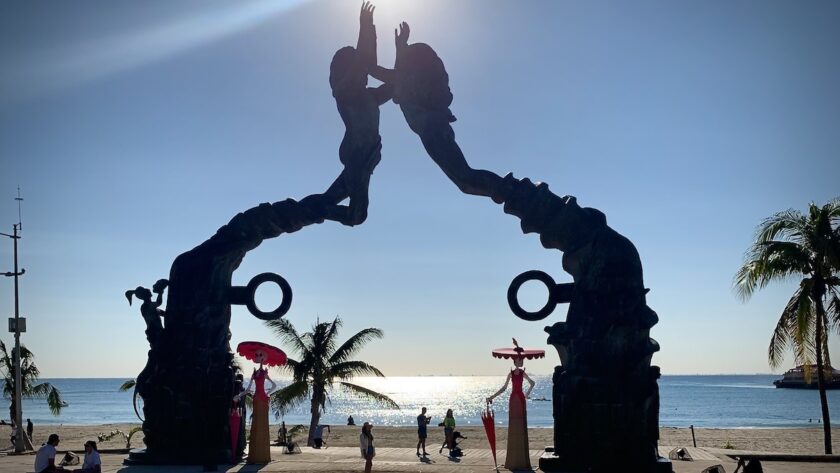Nope. I did not switch locations from Sámara, Costa Rica, back to Playa del Carmen, México (PDC!). Nor am I on vacation in the Caribbean. However, I have a wonderful friend who is staying there for a month, and I want to give her all the info I can. I lived in Playa for a full six months, so I’ve got tons of insight to share. Plus, it was a ton of fun to rehash all the details. It makes me want to go back… but not in August when it’s brutally tropical hot-hot!
Getting There
Playa del Carmen is easy to reach by flying into Cancun International Airport (CUN). Looks like the Tren Maya does(!) go to Playa now. That said, it apparently drops off pretty far outside of the downtown area. So you would need either a cab or ADO bus from the train station to the central area. If you have to cab it, you might as well take the ADO (or prearranged shuttle) the entire way from the airport as it is likely the cheaper option. Cabs often inflate their prices for tourists or even for locals coming or going from tourist areas.
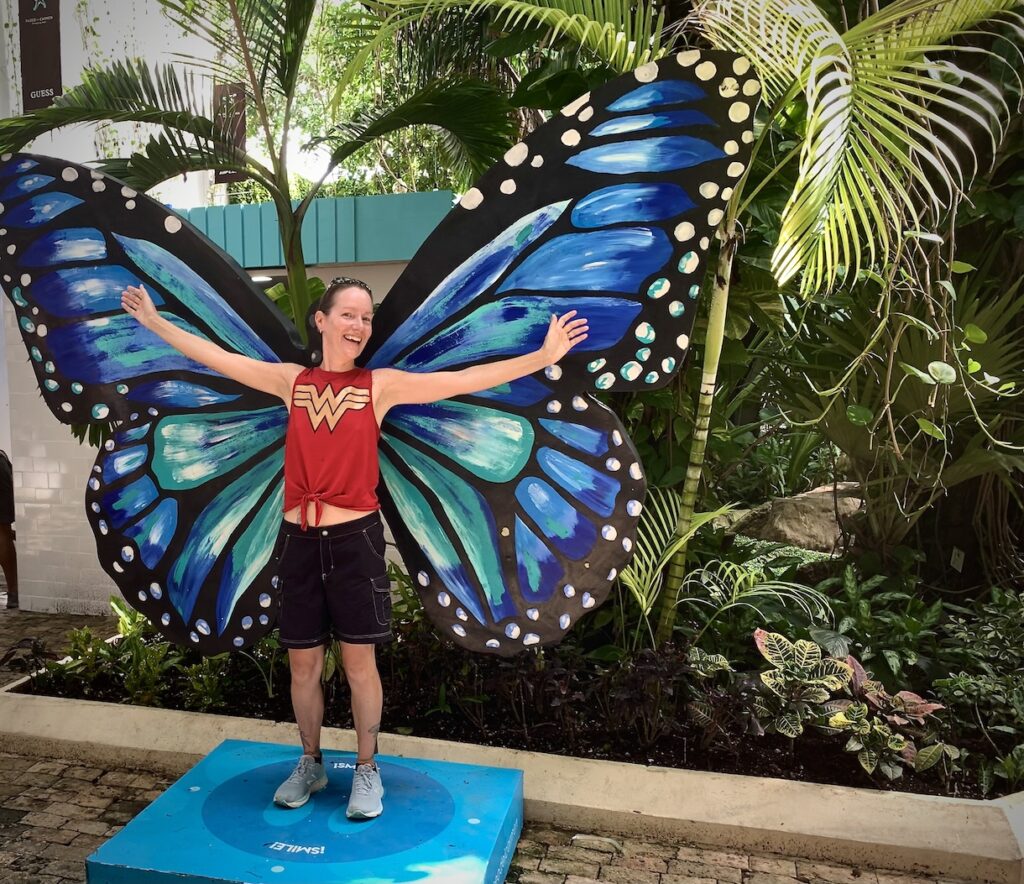
Money-saving tip: Take the ADO bus from the airport directly to Playa del Carmen – it’s comfortable and affordable! If you are only one person, or you are too far to walk from the ADO Turista location, it might make sense to take a shared shuttle directly to your accommodations from the airport rather than taking the ADO, plus a taxi, once in Playa.
Finding Your Perfect Spot
While my friend was apartment hunting in Playa del Carmen, she sent me a link to a place in Center North. Luckily for me, I recognized the building from my stay! The last time I saw it, it was just a concrete frame. It’s in a really cute neighborhood, close to everything you need. Grocery stores, food trucks, and the beach are all within walking distance.
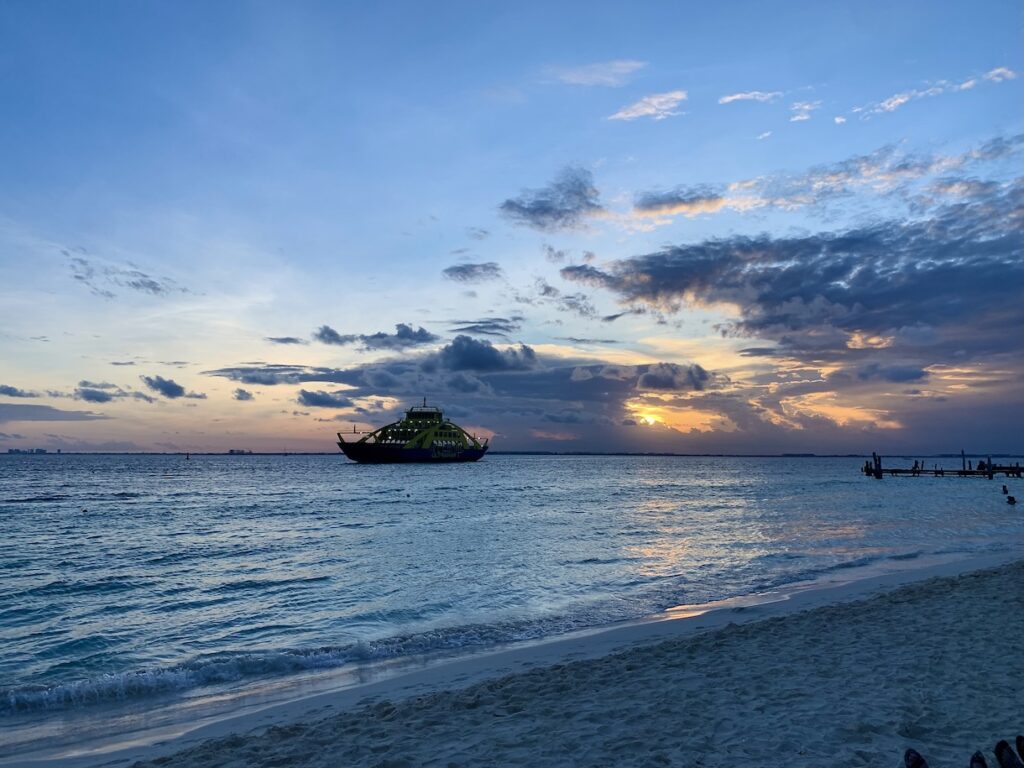
There’s a school nearby, so expect some cheerful kid and band noises during the day. And Buzo’s, a popular local spot, is right around the corner. It can get lively with live music, but don’t worry, it quiets down at a decent hour (unlike Quinta Avenida). As a bonus, I know a guy who DJs there, so I can hook them up with some insider tips on the best nights to go! Plus, the neighborhood has this awesome hipster vibe with vegan spots, gluten-free bakeries, and even a keto-friendly cafe. Oh, and I almost forgot! My all-time favorite Korean restaurant, Han Gong Boon Sik, just opened in a new location in the nearby Gourmet Park. I’m obviously biased toward this location.
Playa del Carmen offers a variety of neighborhoods to suit your style. Here’s a breakdown of some popular areas:
- Center North (Beach Side): Great location close to my favorite beach in front of Mamita’s Beach Club. Easy access to restaurants and nightlife on 5th Avenue (Quinta Avenida). Avoid staying on 5th as it is extremely loud until 4am!
- Center South (Walmart Area): Budget-friendly option with grocery stores nearby.
- Zazil Ha: Charming area with affordable finds, but further from grocery stores.
- Across the Highway: If you’re on a budget and plan on renting a car, consider this area. Taxis, colectivos (shared vans), and walking are all options to get around (the street art under the highway is a must see!), but be prepared for some extra travel time.
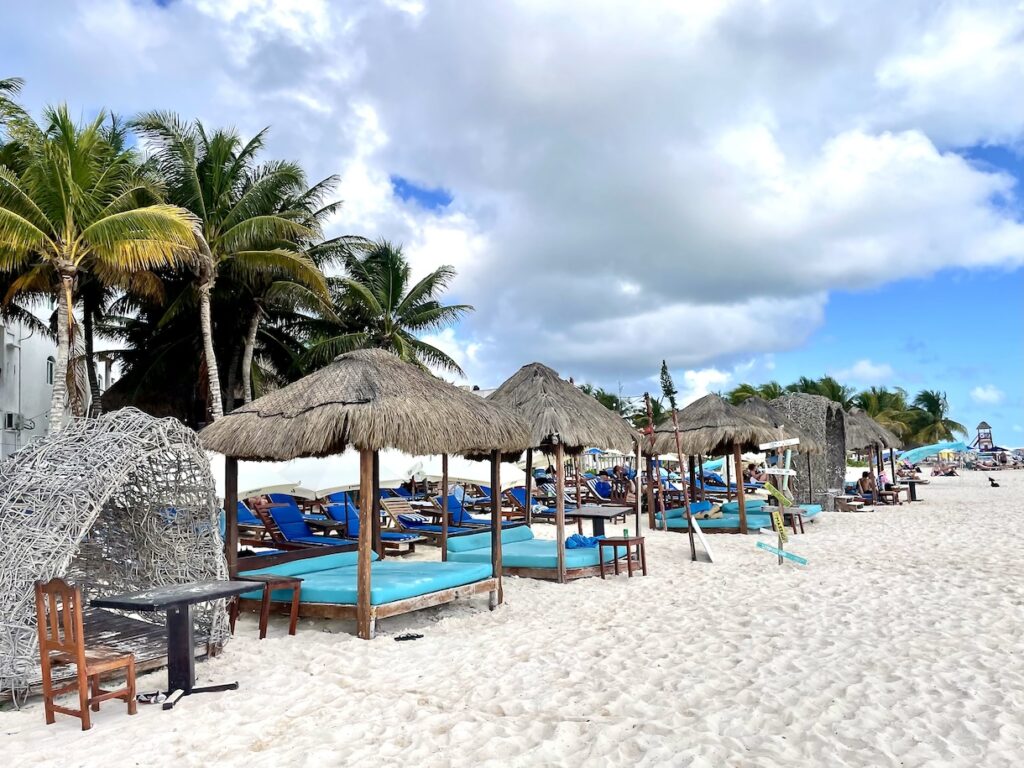
Exploring the Town
- Hit the Beach: The beaches are the heart of Playa del Carmen! Relax on the sand at various public access points, or choose a lively beach club for food, drinks, and amenities.
Lido Beach Club is a cute little spot to have a drink on the beach. Not too expensive, for a beach club, decent food.
Or, if you want to head a little outside of Playa, I really liked the beach restaurant and bar at Beach Club Ojo de Agua in Puerto Morelos for a relaxed day on a beach. You could probably take a Colectivo up there, or a taxi. I had friends with a car that carted me up there, so I don’t know how that works or how much it costs (or if they drop you off at the beach). - Walk Along 5th Avenue: This pedestrian walkway is lined with shops, restaurants, bars, and street performers. Perfect for people-watching and soaking up the atmosphere.
- Explore Playacar Ruins: These Mayan ruins are a fascinating glimpse into the area’s history. There are two sneaky ways to reach them for free: walk along the beach from the ferry area, or just pretend you belong there while walking in a specific entrance.
This ancient site offers a fascinating glimpse into the past and is surprisingly accessible. There are actually two main areas to explore: Xaman-Há and Zona Arqueológica de Playa del Carmen.
You may be wondering how to get there, as Playacar is a gated community. Fear not, adventurous explorers! There are a couple of ways to access the ruins without paying a dime. The first option is a scenic but slightly longer route along the beach. Head to the ferry area, find the path leading to the shore, and follow the coastline until you spot a pathway into Playacar. From there, it’s a short walk to the ruins.
The second way is a little sneakier, but easier and more comfortable. Walking along the beach is hot and annoying. There are two main entrances into Playacar. Phase 1 and Phase 2. Phase 2 is a massive development and has a large gated entrance and fence (right next to the ruins!) with guards. They won’t let you in. Phase 1 is a smaller development and entrance, also with a guard in a booth.
Thing is, there’s a walking path, without a fence, and you can walk right in by pretending that you belong and no one questions it. Walk down Abraira de Arriba, next to Carl’s Jr. in the Paseo del Carmen Shopping Center. Walk right past the guard and hook your first soft right on Coral Negro (stop to admire the massive, gorgeous, tree and maybe see an agouti) and continue to the end to a path that goes around a tennis court. Find yourself at the first set of ruins. For the second set, well… you’re now in Playacar. No more guards. Just go up to the road and walk down the main road (in Phase 2) to the second set of ruins. To go back, just reverse your path. You still cannot exit via the Playacar Phase 2 gate. - Go Beyond Playa del Carmen: Take a day trip to Tulum’s ruins and stunning beach (go early on a weekday as it gets hot and busy), snorkel the vibrant underwater world of Cozumel or Isla Mujeres, or cool off in a refreshing cenote (natural swimming holes).

Foodie Delights
- For Delicious Caribbean jerk chicken, hit Rockas around 4 pm (get there early, it gets busy!). It’s also cash only.
- Venezuelan cuisine? Kaxapa Factory is a must-try! Their arepas are great, but don’t miss the cachapas.
- There are numerous restaurants on Calle 38 Norte (a really cute area with pricier restaurants). Indulge in Yucatan food and chilaquiles at Amate 38. La Vagabunda de la 38 is a great breakfast option and La Perla has Pixan Cuisine.
- For authentic local food, look no further than La Carniza for tacos (45&52). Dried meats. $1/taco. You can just buy the meat and bring it back too. They sell by the kilo. Also, Don PP serves up some legit authentic Mexican and is a great place to get Chiles en Nogada if you’re there around Mexican Independence Day in September.
- Sample the local street food scene at the many food trucks scattered around town. “If there’s a line, you’ll be fine” – a long line is usually a sign of good (and safe) eats! You won’t get much repeat business if you give your customers stomach bugs.
There’s a bunch of food trucks near MEGA Soriana on the South side, and all over town. A food cart over by the side of DAC has some of the best tamales! The Gourmet Park has a pretty good collection of food trucks selling various foods. I just found out that my favorite Korean chef now has a truck here. Han Gong Boon Sik is a must!
A lot of people bring up Alux. It’s in a cool underground cave that has bats. Unique experience. I never did it. Freakishly expensive, and I heard the food is so-so. They used to let you just go down and have a couple drinks, but have cut back on this and have a minimum charge.
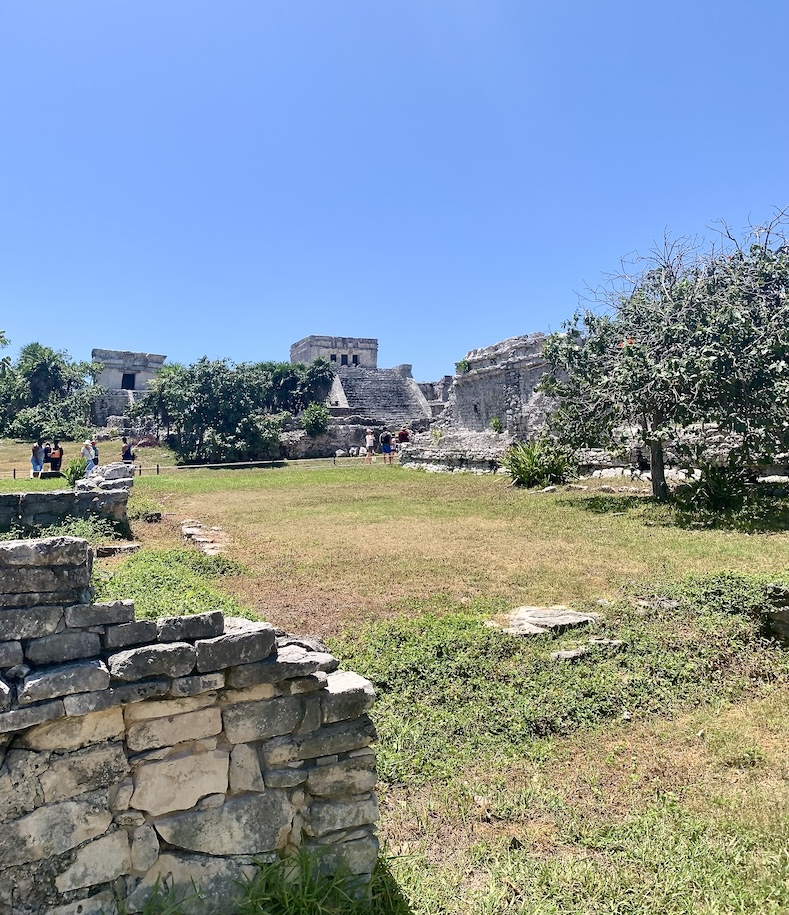
Pro Tips
- Taxis: Download the Radiotaxi PDC App to get official taxi fares and avoid getting ripped off.
You’re probably going to get gringo pricing everywhere you go. It’s annoying, but be aware of the official rate so you know where you stand when bartering. Also note, it’s a good idea to have exact change because the taxi driver you barter with will suddenly and inexplicably not be able to make change. Verify rate before getting in the vehicle.
There are two apps that try to help you do the taxi thing. The one above is the one I prefer (the other one makes you create an account and only requests a taxi). The website of the app has an online map to see the zones, while the other app’s website has fares listed. Not sure if they raised the official fares since publishing, but it should be close.
Also of note, if you pick up a taxi in one of the official marked taxi waiting areas, I think it’s like 5 pesos extra. And if you pick up a taxi on 5th/Quinta… don’t if you can avoid it. They actually have their own, official and published, rates that are pretty significantly higher than the usual rates. If you’re out late partying, though, the only taxis available might be on Quinta because they can charge inflated rates and you have no choice. - Colectivos: A cheap and local way to get around. You can ask your hostel or accommodation for specific routes and stops. Or look at this map to get an idea of the main routes. Smaller change is helpful, but don’t freak out if you don’t have exact. They’ll make change pretty easily. Just ask how much it is. I think it was 16 pesos or something per ride within the city.
I love colectivos. It’s how the locals get around. It’s a shared van that has a door that may or may not shut. They have set rates. They don’t screw people over, even tourists. It’s a fun experience, but you need to have a little more knowledge of where you’re going, which colectivos go where, where you are currently (Google Maps is amazing, and has offline maps if your data’s not great), and at least some way to ask them to stop, “<location name> porfa!” or “Párece por favor!” or even just “Aquí por favor!”
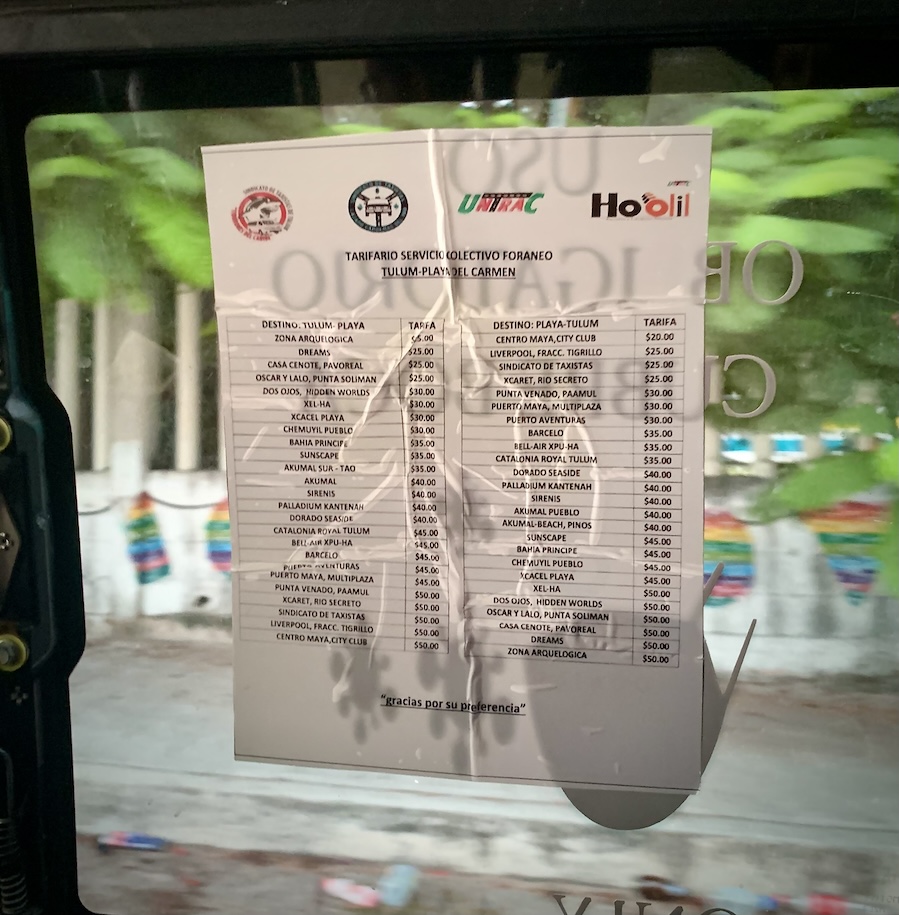
- Regional Colectivo Info. See image for rates, as of 2022, to go to different places going south. (if you want to go to Tulum Ruins, it’s “Zona Arquelogica”). Most colectivos have rates posted on their windows, just let the driver know where you’re going when you get on, and maybe remind them as they’re getting close to where you want to go if you’re not going to a main stop (like a specific cenote)
- Cash is King: While some places accept credit cards, it’s always a good idea to have cash on hand, especially for taxis, colectivos, and street vendors.
- Skip the Tequila “Distilleries”: They’re tourist traps – the real deal isn’t made in Quintana Roo.
If you like whiskey, you should try mezcal. There’s a cheap brand, Fandango, that sells a surprisingly good Reposado Mezcal. MX$220 750mL. My friend who HATES mezcal absolutely loved it. Stay away from anything with a worm in the bottle. Tourist bull-honky. - Embrace the Sun (with Protection!): Pack sunscreen, sunglasses, and a hat. The Caribbean sun is strong!
- No… don’t drink the tap water: Tap water is not safe to drink. Ask your host about it. Hopefully, they already have a jug. Most people use 20L/5gal jugs. Or, you get super lucky and they have a filtration system setup. They had one in Mazatlán and I didn’t have to deal with jugs at all. I was stoked. I doubt that will be the case because the Yucatán Peninsula has so many minerals in the water. The high limestone content is the same reason cenotes exist.
They have 20L/5Gal jugs all over the place. Shouldn’t have to walk more than a couple blocks no matter where you are, but those things are heavy. You pay a deposit on the first jug, and then you exchange it. You don’t need to pay that deposit again. However, the deposit is brand specific. - As far as brushing your teeth: depends on how you brush. Some people go in dry, with only toothpaste on their brush. Brush and then rinse your toothbrush’s head with tap. If allowed to dry between brushings, no issues. I go in wet, so I bring a small glass of potable water into the bathroom and dip my toothbrush. I used to rinse my mouth with potable water (however, dentists have started suggesting you shouldn’t rinse after brushing). Now I no longer rinse.
- Washing Produce: Microdyn and Bacdyn are common products that contain ionized silver. You can add either to your water to soak your fruit and veg.
I don’t worry about soaking things that I’m peeling. Just wash, dry, and peel. Fruits especially. But… I’ve been staying in countries with questionable water for a long time. My gut flora might be a little more robust. So, grain of salt and all that.

Day Trips and Adventures
- Visit the iconic Tulum Mayan Ruins and beach: Taxi there, ADO bus back, or colectivo both ways. Go early on weekdays to avoid crowds!
- Take a fun ferry ride to Isla Mujeres: for snorkeling, a golf cart rental, lunch at a beach club, and exploring the island.
- Embark on a Cozumel shore snorkel: with lunch or a relaxing day at a beach/pool bar with a drink package.
- Explore the fascinating (and colorful!) cemetery: Halloween is the best time to go!
- Dive into a cenote (natural swimming holes): There are many cenotes in the area. I liked Yax Kin, but there are tons to choose from.
- Catch a local game: Fútbol at Deportivo Mario Villanueva Madrid stadium (it’s usually free!).

Grocery Shopping
You can find almost anything in Playa. But imported name brand products are going to cost more. So if there’s a specific name brand product (lotion, shampoo) that you really like, bring it. Picaridin bug repellent (vs DEET) exists, but is hard to find (I’m not a fan of DEET). They have tons of stuff that are not a brand you recognize that are amazing locally for cheap.
Name brand sunscreen is very expensive in México. I brought my own. I really like TotLogic, it’s non-nano particle zinc sunscreen (reef safe).
Fragrance is big in México. Most people don’t have fragrance issues, but fragrance free toilet paper, in particular, is really hard to find. Lo siento. You can find fragrance free toilet paper, but it takes a bit of searching. I ended up getting Quality Day brand at Soriana, which seemed to have no, or minimal, fragrance. When in doubt, give the rolls a good sniff in the store. Chedraui probably also has American brands.
Edit to add: Grocery stores in México commonly have elderly people, or sometimes children, volunteering to bag your groceries at the checkout counter. They are not employees of the store and are working for tips. A couple pesos, depending on how many groceries they help you with, would be appreciated. I’m not a fan of tipping school-aged children on school days, as I would prefer they be in school. I once saw a local restaurant owner walk into DAQ and hand an extensive shopping list to one kid volunteering on the weekend. Immediately, that list was split between five different kids and they were running all around the store, grabbing all his items for him and loading it into his car. Based on their enthusiasm, I’m pretty sure they got a nice tip for their efforts.
- DAQ is a one-stop shop for fruits, veggies, spices, and more. Think Sunday market, but every day!
- Soriana is your reliable go-to grocery store, depending on your location.
- Chedraui offers higher-end options and imports, but it’s not super close to downtown.
- Chedraui Selecto Súper is your fancy import haven with higher prices, but occasional deals on specific products.
- La Europea is your liquor store headquarters (they also have cured meats and cheeses).
- Tortilleria Salmon 23 is the bomb for tortillas (found on CTM on Google Maps).
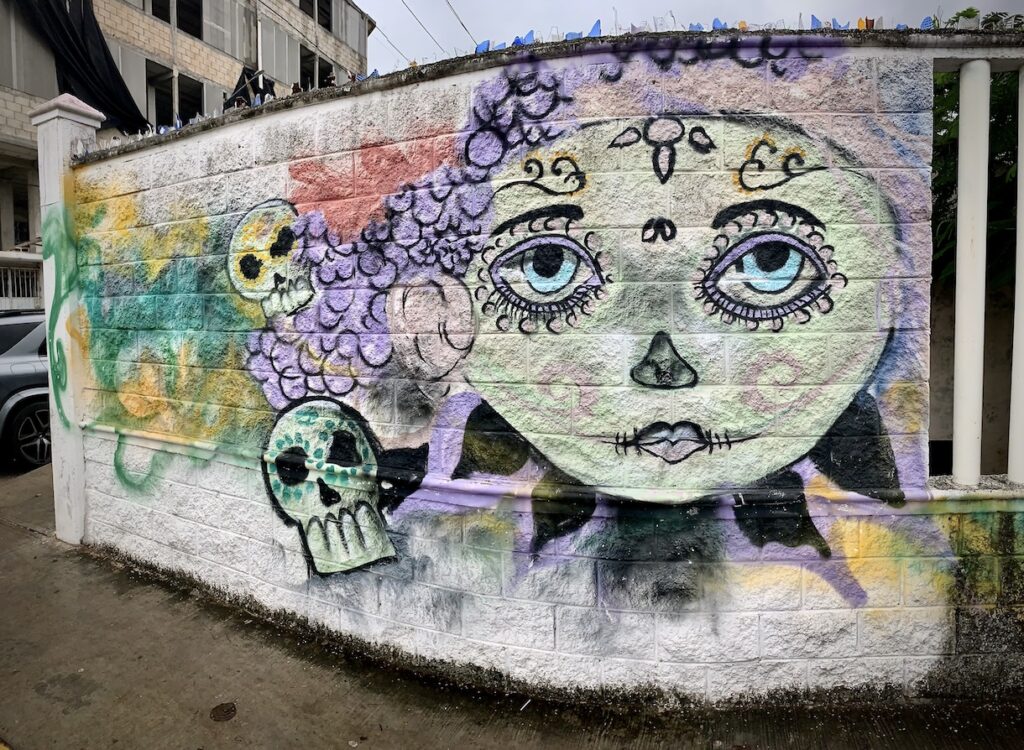
The Boring Stuff
- Banking: I was frequently using the Santander bank; it’s convenient and has decent fees. Right outside of MEGA Soriana.
- Lowest fees: Inbursa, BanBajio, BanCoppel, CitiBanamex, Banco Azteca, Santander
- Mid range fees: Banorte, HSBC
- High fees: ScotiaBank, BBVA
- Pharmacies: Get any of the “free” vaccines before you go (flu, tetanus, COVID). They exist, but they aren’t free. Stick to real pharmacies, not “similares” or those offering crazy deals. They’re usually inside grocery stores.
You can get most medications without a prescription and at a lower price than in the US (bring a prescription bottle if you have one). For minor ailments, you can walk in and tell the pharmacist your symptoms. They will probably be able to sell you medication without a doctor’s visit as pharmacists are doctors.
The only exception is drugs that are sold on the black market, think ADHD meds. You’ll probably need to bring those (check to make sure you’re allowed to have them at all first!), as they’re tightly controlled. No one lies about hypertension, so they don’t care about those meds. - Dental: If you need any dental work, or just a cleaning, Coral Dental Center is the place to go.
- SIM cards: Telcel is ubiquitous and is what I did for a pre-paid SIM card. There are Telcel stores or kiosks on nearly every corner. There’s also Movistar and AT&T. Never used them, can’t comment. Bring your passport. If your Spanish is rusty, it’s not a bad idea to get them to help you activate it in the store.
I believe there are places to buy SIM cards in the Cancun Airport (Terminal 3?) But I’ve never done that as I usually just want to jump on a bus and get to PDC and, invariably, the next bus is in ten minutes and the one after is in an hour. That’s always how it works. If you need something immediately, or just don’t want to deal with that and have a phone that supports eSIM, Airalo isn’t a terrible option. I’ve definitely used them for a few days/a week when I land somewhere while I sort out what SIM card to get and where to get it. - Electricity: You can always send a message to your accommodation to ask about estimated costs for electricity. I paid three pesos per kWh, which is a lot. It wasn’t so bad for me, since I didn’t use A/C. If you use air-con, that will cost you, unless the owner covers the electricity.

Safety
Finally, last but not least… safety. I’ll say it again and again. México is just as safe (if not more so) as the USA… except for sidewalks. They are legitimately dangerous! Potholes and random places you need to pay attention to step up or down and broken bits. Random wires hanging about. Watch your step! It’s an adventure! Of course, don’t break local laws while in a different country, otherwise you’re just asking for trouble.
Thanks to Our Robot Overlords
You might have noticed that the above guide looks way different from my usual articles. I got a bit of help from AI to streamline (and had a lot of fun with it!). Enjoy!
With all this information, you’re ready to have an unforgettable adventure in Playa del Carmen!

Overly lengthy discussion of water in México
Technically, the water companies in MX produce water that is sanitary, but then there are two issues that keep it from being potable. The first is that because people expect you not to drink the water, the plumbing to your home isn’t setup to keep it sanitary while being transported to you. So it’s not. The second is the minerals in the water. It’s not filtered to be potable. Depending on location in México and where they source it, the amount of minerals can vary.
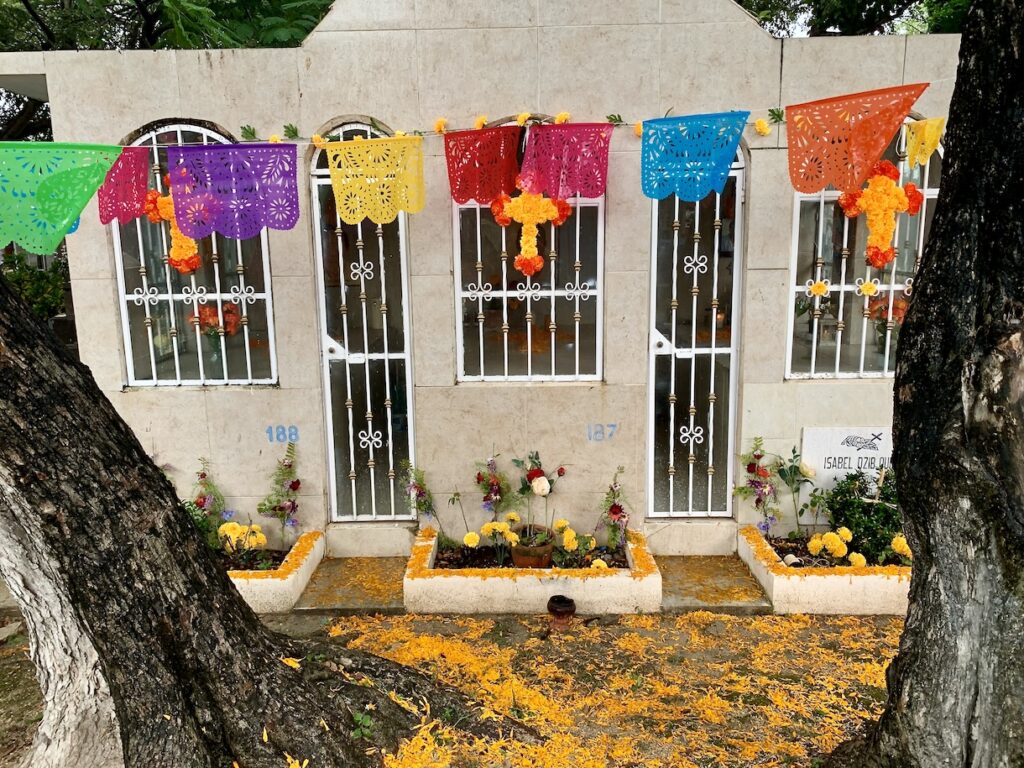
PDC has hard water, like chunks of stone that can clog your taps. Shut down your kidneys levels of minerals. People don’t give this tap water to their pets. Depending on the building, sometimes they have filters setup to trap a lot of this sediment. If it were me, when they let you into the place you’re staying, don’t let them leave without giving you at least some water and information on how to get water.
Hopefully, they have a pump. If all else fails, they sell them at Soriana for pretty cheap and are called either “Bomba sifon para agua” or just “Bomba de agua”. Good luck!
